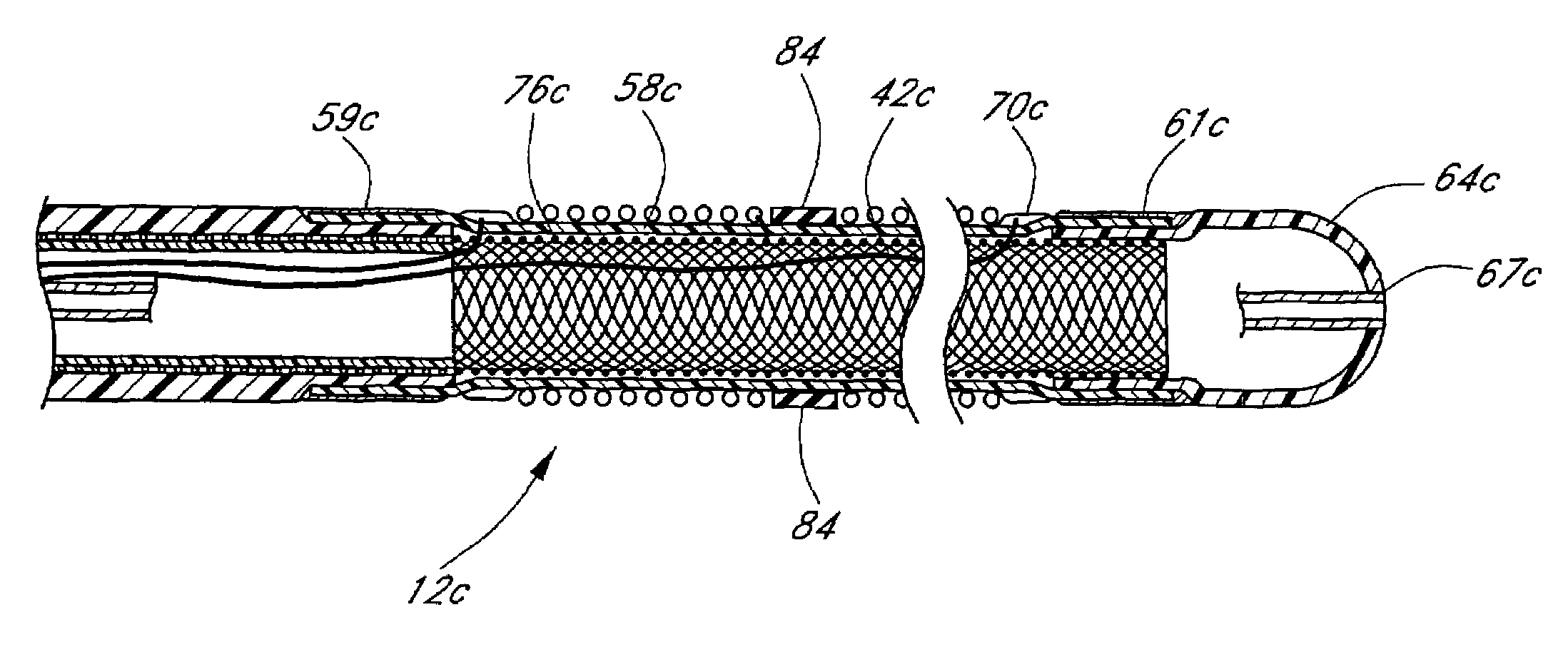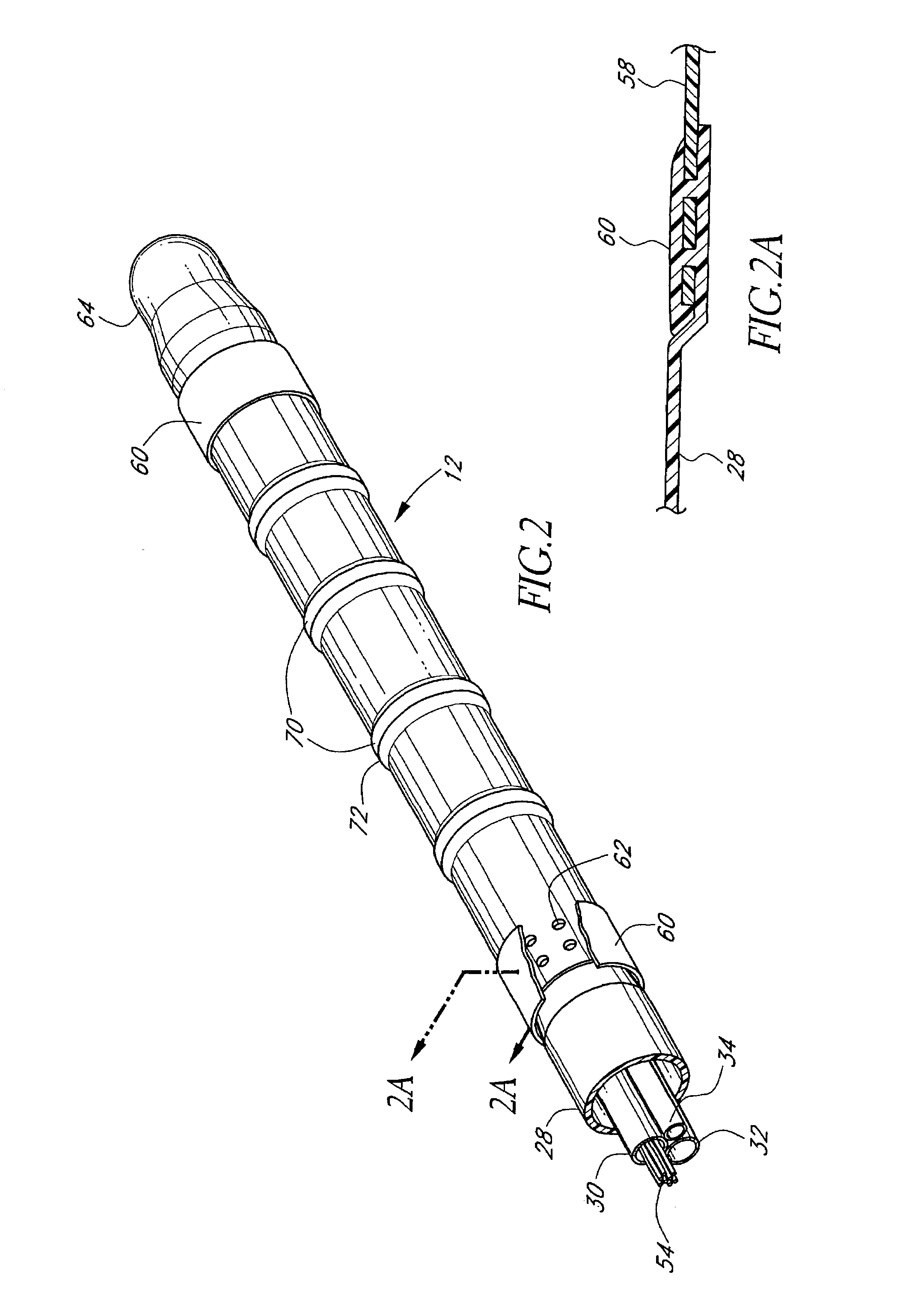Irrigated ablation device assembly
a technology of irrigated ablation and assembly, which is applied in the field of surgical devices, can solve the problems of adverse medical effects, inability to achieve substantial efficacy, and high invasive methodology, and achieve the effect of reducing the risk of infection, and reducing the effect of invasiveness
- Summary
- Abstract
- Description
- Claims
- Application Information
AI Technical Summary
Benefits of technology
Problems solved by technology
Method used
Image
Examples
Embodiment Construction
[0071]FIG. 1 illustrates a tissue ablation device assembly 10 with an irrigated ablation member 12 configured in accordance with a preferred variation of the present invention. The present ablation member 12 has particular utility in connection with forming a linear lesion within myocardial tissue of a left atrium of a mammal's heart. The application of the present ablation member, however, is merely exemplary, and it is understood that those skilled in the art can readily adapt the present irrigated ablation member 12 for applications in other body spaces, as well as to ablate other shape lesions.
[0072]The ablation member 12 is attached to a delivery member 14 in order to access and position the ablation member 12 at the site of the target tissue. In the illustrated mode, the delivery member takes the form of an exemplary over-the-wire catheter. The delivery member 14 comprises an elongated body 16 with proximal 18 and distal end portions 20. As used herein, the terms “distal” and ...
PUM
 Login to View More
Login to View More Abstract
Description
Claims
Application Information
 Login to View More
Login to View More - R&D
- Intellectual Property
- Life Sciences
- Materials
- Tech Scout
- Unparalleled Data Quality
- Higher Quality Content
- 60% Fewer Hallucinations
Browse by: Latest US Patents, China's latest patents, Technical Efficacy Thesaurus, Application Domain, Technology Topic, Popular Technical Reports.
© 2025 PatSnap. All rights reserved.Legal|Privacy policy|Modern Slavery Act Transparency Statement|Sitemap|About US| Contact US: help@patsnap.com



